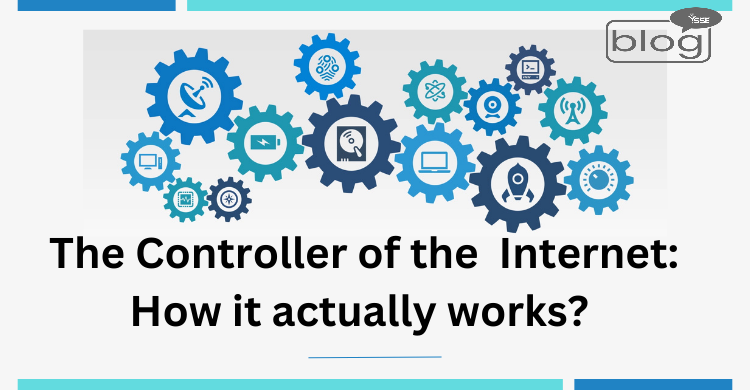A network of networks makes up the Internet. It operates on standardized networking protocols that are interpretable by all computers and by utilizing a method known as packet switching.
Almost everyone in the world uses the internet, making it the most significant tool and resource. Millions of PCs, websites, servers and web pages are all connected via it. We may send our loved ones emails, papers and photos by using the internet. The internet has made work in the modern world incredibly simple. A global computer network known as the internet is used to send media and data between devices that are networked together. Network functions are coordinated by a software called a network controller. It acts as a bridge connecting the company and the network infrastructure.
The controller receives the intended business objectives from the organization and configures the network to meet those goals. The way network controllers work is by:
. Keeping track of all the network’s devices and their state.
. Automation processes on devices, like image updates and setups.
. Monitoring, detecting and proposing fixes for possible problems with network functioning.
. Supplying a framework for integrating other programs, including reporting systems.
One of Internet Controller’s features is that it’s utilized to manage virtual networks.
Virtual network policies are distributed and stored, and individual virtual machines (VMs) are created and configured with virtual network adapters via Hyper-V network virtualization.
It supports networks based on virtual Local Area Networks (VLANs) including Virtual Extensible Local Area Networks (VXLAN) and Network Virtualization Generic Routing Encapsulation (NVGRE).
The firewall administration function allows the user to configure the firewall access control rules for the workload virtual machines in the data center for both internal and external network traffic.
The user can also utilize the virtual appliance chaining capability to connect virtual network appliances to virtual networks. Virtual appliances can be used to deliver a range of network services, including intrusion detection and prevention, load balancing and advanced firewalling.
The Internet Network Controller’s operation involves two main steps:
First, it must continuously monitor the status of network devices and services and make sure that any configuration drift from the intended state is fixed.
Automating the device setups and image updates is the second step.
The next step is to watch how the network functions, identify any problems, and look into potential fixes.
Supplying a framework for the integration of other programs, including a reporting system.
For the majority of jobs, a basic PC approach can be used to implement internet control. If an instrument locks up for whatever reason, the watchdog circuitry will instantly restart the instrument and the PC so that data measurements can proceed. This is something we propose for instruments that are situated remotely, nevertheless. In order to continue measuring after a restart, the PC must be configured properly. The Internet operates in this manner.
The Internet is able to change human lives and for this reason, controllers of the internet must control it so that best output can be gained from using the internet. Instead of using the internet for entertainment purposes, it should be used to make fruitful works that can bring a change to human life.
From an independent point of view, humans control the internet. But, if we look closely, giant companies like Amazon, Facebook, Youtube etc. have a vast number of users and these companies do decide what will be on the internet. Complex algorithms have been developed to understand the mind of the people and provide them with content accordingly. So, this can be easily said that the controllers of the internet are none but the tech companies who are running the whole world wide with some set of algorithms.
To read more blogs like this, click here
Writer,
Tithi Rani Sarkar
Intern, Content Writing Department
YSSE

